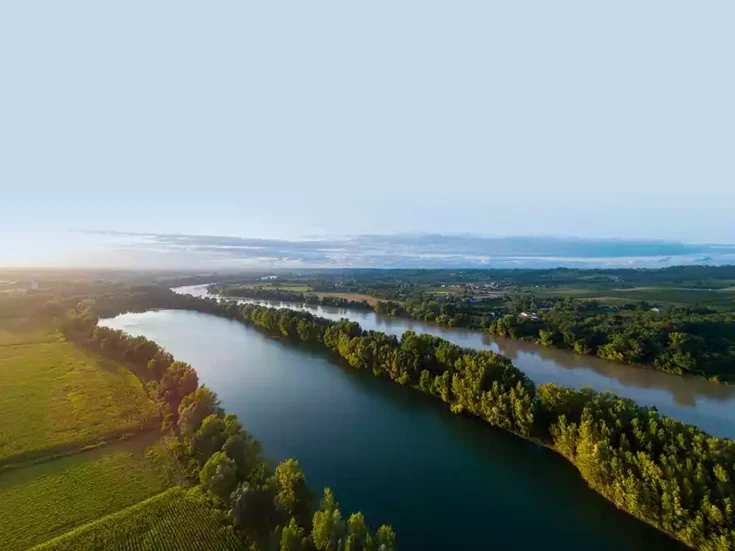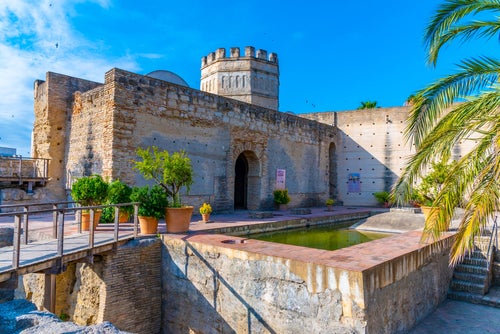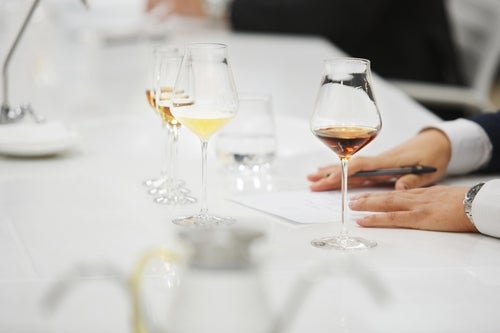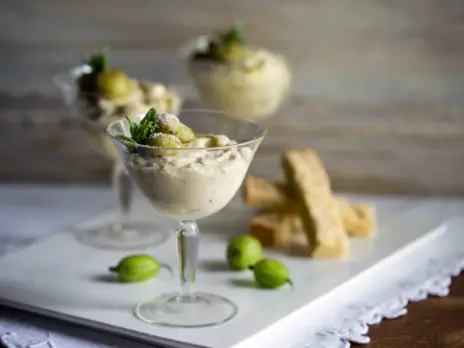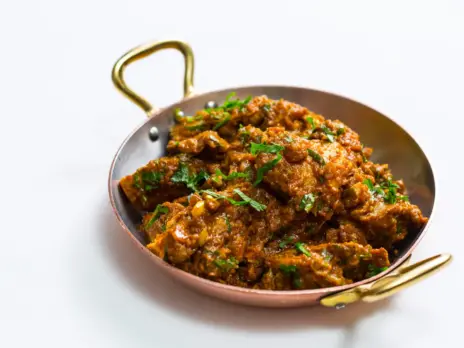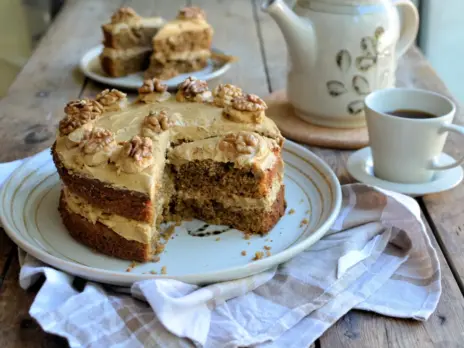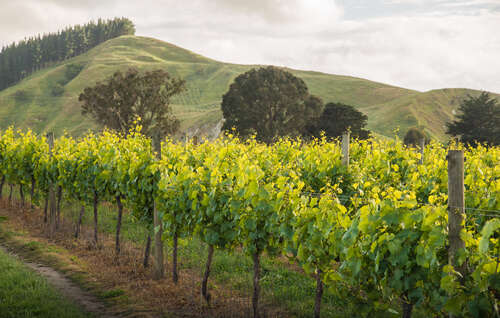
In a piece first published in WFW73 in 2020, Michael Schuster is impressed by the quality of the Hawke’s Bay Chardonnay Collection compiled by Cameron Douglas MS.
Starting in 2010, with the 2008 vintage, the Gimblett Gravels Association released, to top commentators worldwide, a selection of a dozen red wines representing the best of a single year from Hawke’s Bay’s Gimblett Gravels, the selection made by Andrew Caillard MW. At the end of 2020, Hawke’s Bay Wine, the Hawke’s Bay Winegrowers Association, released their first Hawke’s Bay Chardonnay Collection, the vintage in question being 2019. Leading the selection for this inaugural dozen was Cameron Douglas MS, New Zealand’s first Master Sommelier, who chose his top 12 “range of styles” (plus a cross-section of quality, clearly), with the help of a team of blind tasters, from 55 wines submitted, ranging in price from a “recommended retail price” of NZ$25 to NZ$150 (or, now on wine-searcher.com, £10–100).
Hawke’s Bay Chardonnay in figures
Hawke’s Bay is currently New Zealand’s second-largest wine-producing region, representing 13 percent of the country’s vineyards; however, it is dwarfed by Marlborough at 70 percent (New Zealand Wine Vineyard Reports: A Snapshot 2020). And while Chardonnay represents only 8 percent of the country’s vineyard area (and 10 percent of its white plantings), it is 21 percent of Hawke’s Bay’s vineyards (second only to Sauvignon Blanc at 26 percent) and a generous 35 percent of its white vineyards. To put Hawke’s Bay Chardonnay plantings in perspective, at 2,678 acres (1,084ha) in 2020, they are not dissimilar in size to those of Chassagne-Montrachet, Puligny-Montrachet, Meursault, and Corton combined, at around 2,372 acres (960ha). A suitable, comparison perhaps.
Quantities for the individual Hawke’s Bay Chardonnays in question are mostly very small, a few hundred cases of six for the majority (between three and 13 barrels’ worth). Only three wines here were produced in thousands of six-packs in 2019: Tony Bish Heartwood (1,700), Cooper’s Creek The Limeworks (2,619), and the Clearview Reserve (3,000). More’s the pity. For I would happily spend time with any one of these wines as a table companion—now and over many years.
The 2019 Hawke’s Bay Chardonnay vintage: outstanding
A frost-free spring; a cool, sometimes wet flowering, meaning reduced yields; a growing season with temperatures well above the long-term average but without being excessive; and long, hot, sunny summer days, with moderate to cool nights—all ideal ripening conditions, resulting in grapes that were perfectly ripe, with no disease and having a toothsomely fresh acidity. At harvest, the grapes were small and healthy, the weather warm and dry. Comments from Hawke’s Bay Wine were lavish: “2019 will be remembered as one of the greatest Hawke’s Bay vintages of all time”; “There is no question that the 2019 vintage, reds and whites, have the potential to be some of the greatest wines produced.” It seems, as it happens, that 2020 looks to be similarly exceptional.
My drinking windows below will likely, to many, seem improbably long. But I base them on my and my wife Monika’s experience of the Kumeu River Chardonnays that we have in our cellar (mainly 2010 and 2014), where not only Maté’s Vineyard (a given, perhaps?) but also others in the range are evolving gradually, evenly, and gloriously under screwcap, at seven and 11 years of age. With the sole exception of the still quite “tight” Heartwood, all of these 2019 Hawke’s Bay Chardonnays offer an abundance of pleasure already, and while many New Zealanders will have a much better sense of their aging track record than I do, it would seem to me that if you can, and are interested, it would certainly be worth following these over an extended period.
Scores and Burgundy comparisons
As many readers will know, I dislike and distrust scores. Beyond a general approval/disapproval, it is not clear quite what they measure, but context, company, associations, memories—all of which play a role in our drinking pleasure—play no part in their assessment, and I feel they imply a precision that is largely unwarranted as a reflection of what is often a multifaceted drinking experience. Equally, I appreciate the usefulness of scores in situating wines in a (sort of) hierarchy, and I know that many readers want and value them. And so I comply. But where Chardonnay in particular is concerned (Pinot Noir, too), I think there is a more illuminating quality measure—namely, the Burgundy hierarchy. And I quote myself, from Essential Winetasting, because I can’t be any clearer: “What matters for me, is where a Chardonnay lies on the taste-quality ladder, and the easiest ‘calibration’ to use for this is Burgundy’s long-standing four-tier quality hierarchy: generic, village, premier cru, grand cru. Don’t misunderstand me, this is emphatically not to say that the Burgundian norm is the ideal, that the closer a wine is to Burgundy the better; but that Burgundy’s hierarchy is a usefully revealing quality benchmark, quite independent of style. An important distinction. Every wine makes an implicit quality claim with its pricing, and I find Burgundy’s hierarchy a useful means of quality benchmarking within the vast Chardonnay ocean. In essence, for a given price/implicit quality claim, I want a generic, a village, a premier cru, or a grand cru ‘experience.’” All the while, I understand that you need to have experienced good examples of each for all this to make sense. But if you are reading The World of Fine Wine, you most likely have. And hence the inclusion here of my sense of where these wines sit in the Burgundy hierarchy continuum.
Value and winemaking
Although most of these are not widely available, all seem to me to represent very fair to excellent value, and it is particularly good to see two of the best-value wines—the Tony Bish Heartwood and Clearview Reserve—produced in reasonable quantities. Today, good village white Burgundy costs twice what these two sell for.
These are beautifully made wines where oak is largely very well integrated, mostly not apparent as such; and where it is present to taste, it serves as an attractive condiment. For my palate, both in these and in other recently sampled New Zealand Chardonnays, I find that 13–13.5% ABV, which is where they mostly lie, is a particularly comfortable alcohol sweet spot. Clearly, there can be more than a sufficiency of ripe fruit at this level and, in today’s climate, little risk of excess acidity; while at 14% ABV (and above), there is the chance of a slight hardening of texture, and an impinging warmth. By no means a certainty, but a taste aspect to be aware of, I guess. The screwcap advantage meant that many wines were a touch reductive to smell on opening, suggesting, perhaps, that an initial “oxygenating” splash-decanting might be routinely worthwhile.
Quality range and stylistic variety
This tasting demonstrated that while not (yet?) producing wines that can stand shoulder to shoulder qualitatively with the very finest of white Burgundy, there is a clear quality range extending all the way up to grand cru equivalence in terms of scope, overall harmony, length of flavor and aftertaste, aromatic subtlety and complexity.
If there is a Hawke’s Bay signature, it would appear to be a particularly juicy core of pure and peachy ripe fruit, beautifully defined and prolonged by an appetizing acidity. I would compare most with Puligny if seeking a stylistic comparison, but with a glance at a tauter, Chablis-like vein, too—The Limeworks, Heartwood, Salome, for example. Above all they come across as naturally fresh and deliciously complete expressions of Chardonnay.
New Zealand’s almost north/south alignment, 350 miles (560km) between Auckland and Marlborough, 450 (725km) between Auckland and Christchurch, plus 6 degrees difference in latitude between the latter, is of course going to make for clear stylistic differences in the same grape variety. I had a coincidental, and convenient (also February 2021), opportunity to taste this in a webinar hosted by Natasha Hughes MW and Ronan Sayburn MS, comparing Australian and New Zealand Chardonnays, featuring a Villa Maria Marlborough (Taylors Pass) and Neudorf Nelson (Rosie’s Block). Both of these were paler in appearance than the Hawke’s Bay Chadonnay wines at a similar age, a pale lemon as distinct from a pale gold; and to smell, the Marlborough had a more lemon/citrus scent than the Hawke’s Bay peach and nectarine, the Nelson “cooler” still, with almost a suggestion of herbs: mint, thyme, rosemary. And to taste, both wines were similarly “cooler,” crisper in acidity, more citrus than stone fruit oriented, a touch leaner, tauter, more slender in style. South Island style. And a Kumeu River, also tasted at the same time, from 200 miles (320km) farther north, albeit cooled by the proximity of two oceans, had even more fruit presence than the Hawke’s Bays. New Zealand terroir.
Maps and classifications?
Time, then, for an accessible navigational map of New Zealand Chardonnay? A terroir/geology-based Hawke’s Bay hierarchical map? The variety of styles and the quality range are clearly there. So, it’s tempting to clarify and classify—and I’m sure this has been on other minds than mine. But in the context of today’s very transparent, right-to-be-offended, social-media circus, and among those whose immediate reaction would echo a long-distant phrase with “When I hear the words classification and hierarchy, I reach for my lawyer” (just look at the sad, unedifying spectacle that is the current, and previous, reclassification in St-Emilion); in such circumstances, I guess it is unlikely to happen. The recognized details will have to be left to the whispers and innuendo of the connoisseurs, and to the pages of obscure blogs and journals. And were such maps/classifications to see the light of day, who knows whether they would be rendered out of date by the rapidity of climate change before the printer’s ink had even dried? No, I suspect the details will be left unscripted, if not unsaid. They will just have to be savored. And there is certainly plenty to savor.
Wines tasted in London, February 2021
All of these wines are closed with screwcaps. The indicative UK retail prices per bottle were taken from wine-searcher.com in August 2021.
2019 Coopers Creek The Limeworks Hawke’s Bay Chardonnay (12.5% ABV; 11 months in 20% new oak; 2,619 cases of six; £9–11)
Pale gold. A light oak-vanilla cream over fresh peach and tangerine. On the lighter side of medium-full, vital in acidity; a bone-dry, taut, linear wine, almost Chablis-like in its proportions and style; clean, straightforward, lemony flavor, a touch lean overall, and with a modest length of finish. Pleasing in its slightly austere way, perhaps not immediately obvious as Hawke’s Bay in style. Lacking the fruit-flesh one might expect? Best drunk young, though its acidity will obviously allow it to keep. A New Zealand version of Australia’s “skinny” style from a decade or so ago, perhaps? Deliberately early-picked, that is, rather than a site issue? I don’t know. Drink now to 2025+. Good Bourgogne blanc/decent, basic villages equivalent. | 87
2019 Pask Declaration Hawke’s Bay Chardonnay
(13% ABV; 10 months in 55% new oak; 650 cases of six; £20–25)
Pale gold. Rich and peachy to smell, very slightly reduced initially, nice though. Medium-full, fresh to lively in acidity; light, pure, peachy-ripe flavor, modest in scope, but well carried across the palate and with good, light length. The kiss of oak is clear, but it wears its oak well and subtly. Most attractive now—probably best young. Now to 2025+. A very nice, mid-rank villages equivalent. | 89
2019 Askerne The Archer Hawke’s Bay Chardonnay
(14% ABV; 10 months in 28% new oak; 260 cases of six; £30–35)
Pale gold. Fruit-dominated, peach and nectarine nose. Fairly full, moderately concentrated, fresh in acidity; a plump, ripe flavor, which mirrors exactly the fruit on the nose, with its juiciness nicely refreshed by its acidity, and with good, light, peachy length. Immediate, moreish, the very image of what’s-not-to-like, good-quality Chardonnay. Now to 2025+. Good villages equivalent. | 89+
2019 Monowai Upper Reaches Hawke’s Bay Chardonnay
(14% ABV; 50% new oak; 540 cases of six; £15–16)
Pale gold. An attractively dense and peachy nose; rich, supple, fleshy wine, with a nice depth of ripe fruit. A touch warm/hard from its alcohol, if you are at all sensitive to that, but ample and generous, with a moderate complexity, excellent fruit persistence, and an overall very nice harmony in its slightly more powerful expression. Now to 2027+. Very good villages quality. | 90
2019 Collaboration Aurulent Hawke’s Bay Chardonnay
(13% ABV; 11 months in 30% new oak; 450 cases of 6; £14–20)
Pale gold. This is still quite tight to smell, a touch reduced, a touch leesy behind the peachy aromas. Medium-full, with a good depth of fruit, fresh in acidity, a fine overall balance. A most attractive blend of peachy ripe fruit and freshly defining acidity, with a good length of flavor, a nice complexity across the palate, and excellent, lightly aromatic persistence. Beautiful, complete, seductive Chardonnay. A peach of a wine, one might say. Easy, graceful, classy, and remarkable value. Now to 2029+. An effortless lesser premier cru quality. | 91
2019 Villa Maria Keltern Hawke’s Bay Chardonnay
(14% ABV; 11 months in 40% new oak; 600 cases of six; £25–35)
Pale gold. A subtle, refined, persistent, peach and tangerine nose, immediately notable for its finesse; full-bodied wine, with a nicely defining fresh to firm acidity. A very nice depth of crisply defined ripe fruit, pure, linear, long in the mouth and with a long, fruit-cored finish. Gentle power and firmness of flavor at once, that slight hardness of alcohol for those sensitive to it—but this is just an observation of style. Taut, pure, intensely flavored, very good now but doubtless with years in hand. Now to 2032+. Good mid-rank premier cru quality. | 92
2019 Tony Bish Heartwood Hawke’s Bay Chardonnay
(13.5% ABV; 11 months in barrel; 1,700 cases of six; £25–30)
Pale gold. Still quite tight and closed to smell, gently oaky, nectarine fruit in character. Medium-full, fairly concentrated, firm in acidity, intensely flavored, gently sinewy wine. Taut and linear, slightly citrus-tinged in flavor, long and pure, a sort of richer Chablis in style (with some of the firmness and sinew of fine Chablis, that is) and with excellent fruit persistence. Fine, long-term Chardonnay that needs time to relax, to yield, to open out. Excellent quality, remarkable value, and produced in reasonable quantity. Drink 2024–40? Clear, fine, mid-rank premier cru quality. | 93
2019 Clearview Reserve Hawke’s Bay Chardonnay
(13.5% ABV; 43% new oak; 3,000 cases of six; £20–25)
Mid-gold. Subtle, peach and nectarine purity to smell, gently oak-cedary, with an attractive delicacy, too. Medium-full, quite firm in acidity, a very nice “vital” balance, with a good depth of ripe nectarine fruit, deep, generous, succulent, long and complex across the palate, with a fine, gentle, mouth-coating aromatic complexity, and superb, fragrant length. Delicious now, years in hand. Superb wine, remarkable value, and, like the Tony Bish Heartwood, produced in decent quantity. From the sea-breeze-cooled, coastal Te Awanga vineyard, regularly rated a top New Zealand Chardonnay site—as it is once again in this case! Drink now to 2034+. Classy, harmonious, fine, mid-rank premier cru quality. | 93
2019 Sacred Hill Rifleman’s Hawke’s Bay Chardonnay
(13.5% ABV; 11 months in 80% new oak; 450 cases of six; £30–35)
Mid-gold. A very classy nose here, a subtle, complex, persistent blend of fine new wood and fresh white peach fruit. Rich, medium-full to full-bodied wine, vividly defined by a firm acidity. Intense in flavor, a combination of peach and citrus; long and taut and racy across the palate, its oak a clear and attractive condiment, not intrusive, gently fleshy at the same time. Complex, aromatic, and very long to finish, the finish marked by fruit and scent. Deliciously satisfying already but clearly with years in hand, and very fair value to boot. Now to 2040+? Fine, complete premier cru quality. | 93+
2019 Elephant Hill Salome Hawke’s Bay Chardonnay
(13.5% ABV; 12 months in 28% new oak; 160 cases of six; £35–40)
Pale gold. Young and tight and, for now, a bit marked by its new oak on the nose, with a lemon-and-lime citrus-fruit character. Rich, concentrated, fairly full-bodied wine, with a vivid to firm defining acidity. Intense in flavor, lively, lemony, long, and mouth-coating; another example (like the Tony Bish Heartwood) that is almost Chablisesque in character, with great tenacity of flavor and great length. Splendid wine. Impressive now, but even better in a few years. Now to 2040+. Top premier cru in quality, nudging grand cru. | 94
2019 Bilancia Tiratore La Collina Hawke’s Bay Chardonnay
(13.5% ABV; 2001 plantings; 486 cases of six; £35–40)
Pale gold. Discreet, subtle, and refined to smell, a fresh nectarine and citrus character, delicately oaky and persistent. Full-bodied, fleshy wine, with a fresh to lively defining acidity; ripe, fragrant, subtle, fleshy yet fresh; long and complex across the palate, aromatic, racy, and gently mouth-coating. A beautiful overall harmony alongside a fine aromatic complexity, and with great length. Classy, refined, gentle, harmonious. A most complete Chardonnay. Absolutely lovely. And as with so many of these, excellent relative value. Now to 2040+. Top premier cru quality, bordering on grand cru. | 94+
2019 Church Road Tom Hawke’s Bay Chardonnay
(13.5% ABV; 11 months in 31% new oak; 600 cases of six; £75–100)
Pale gold. Still closed to smell, intense, gently marked by a cedary new wood, faintly reductive, very persistent. Full-bodied, concentrated, vitally defined; deep and intense, ample and complex, aromatic, detailed, and exciting, with great length. A most satisfying, complete, and subtle Chardonnay, with terrific scope and a wonderful, imposing harmony. Here, perhaps, a slightly stony Meursault character? In any case, clearly a New Zealand grand cru, with the pure, ripe core fruit of the Hawke’s Bay, along with the class and scope of grand cru Burgundy. Impressive now, but with decades in hand. A glorious expression of the grape. And even with its three-figure NZ dollar price tag, terrific value. Clear grand cru quality. | 95+

